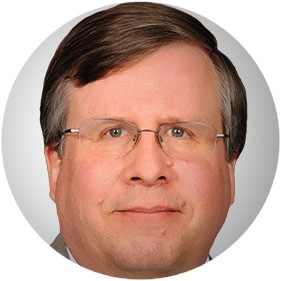
Investor's Manifesto: A Beginners Guide to Investing
August 1, 2022
 By Michael Moreland
By Michael Moreland
Retired Vice President of InvestmentsMany of you are aware I retired from day-to-day activities in the Wealth Management Division at the end of June. I enjoyed my career immensely, largely due to the wonderful people I had the opportunity to work with – both inside and outside the bank.
After 45 years in investment management of bank portfolio and fiduciary assets, I’m setting down a few considerations for others involved in investment management – for both personal and professional purposes. Some are original; most are not. They are not infallible, and every person’s experiences and views will be different (a difference of opinion is what makes a horse race). They’re certainly not academic in nature – the CFA Journal likely wouldn’t open my email. These are for you to think about and, if you want, incorporate into your philosophy and actions. You could call this a beginner’s guide to investing or an investor’s manifesto.
What I hope to accomplish is to provide a sense of perspective of what’s important and what’s noise – and most of what you hear is noise. Understanding the difference is a key to success. Know the big things. Be aware of everything else, but don’t let non-essential information govern your decisions. As well, simplify. Stick with your principles. There has never been an investment product you must own or a strategy you must engage if it doesn’t fit your thesis. To thine own self be true – you will walk away having done a great job for those who depend on you.
And now, a few points to remember when considering how to invest…

1. Don’t fight the Fed.
In “All the President’s Men”, a best-selling book and subsequent movie about the Watergate scandal, the key informant’s constant advice is “follow the money.” The same is true in the financial markets.
The Federal Reserve controls the supply of money and credit to the financial system, making it cheaper or dearer as it sees appropriate to the accomplishment of its goals. When the Fed takes a stand, its actions first impact the bond market, then the stock market, and finally, the real world. Accommodative policies lead to asset inflation and economic growth, restrictive policies lead to asset disinflation or deflation and economic contraction.
Changes in the shape of the yield curve over time tell you where the Fed is headed – and it’s always moving in one direction or the other. A neutral monetary policy may exist in name, but it goes against the nature of the Fed (or any other government agency) to step back and let the private sector rise or fall on its own. By its charter the Fed must meet often-conflicting goals. As such, it is always in motion – sometimes just less vigorously than others.
Study the Fed and stay on the same path. Buy risk assets when the Fed is accommodative; reduce risk when it is restrictive.

2. If you don’t understand something, don’t overindulge.
One of the biggest changes in my career was the exponential growth of derivative instruments – and with them, a similar increase in the complexity of available financial products. In and of itself, complexity is not a bad thing. Complexity combined with leverage, however, sets the table for market crashes and trading debacles.
In my simple view, a complex instrument is anything which I cannot explain or easily predict the source, timing, or amount of principal or interest payments. Complexity is acceptable in normal environments. Recent decades, however, witnessed a rise in “black swan” events – financial events beyond the normal realm of expectations (a good argument can be made that derivatives are a primary cause of these disruptions). Unfortunately, complexity and liquidity are in inverse relationships in periods of financial stress.
If you buy a complex financial instrument, buy it with the understanding that you may not 1) receive your P&I in the manner or amount expected, or 2) be able to sell the instrument in times of financial stress. Then ask yourself if the reward is worth these risks. I’ll bet it’s not.

3. Know and appreciate the powers of compounding and dividend growth over time.
Albert Einstein called compound interest “the eighth wonder of the world”. Sidney Homer and Martin Leibowitz, in their required-reading Inside the Yield Book, showed that the largest part of a bond’s return is from the compounding of interest earned on the coupon payments received. It may seem insignificant in periods of low interest rates. It is not.
Dividend growth over time from a diversified mix of high quality individual stocks is a thing to behold. As you review individual portfolios of long term holdings (fifteen years or more) it’s not uncommon to see stocks generating annual income streams greater than a quarter to half of their original costs (and remember the compounding factor).
You can do the math.

4. Transparency in pricing is critical.
The legacy markets – the New York and American Stock Exchanges – had their faults. Among these were high transaction costs and near-monopolistic control over stock trading. When you bought or sold securities, however, you knew the latest price, the spread between bid and offered sides, and trend of recent activity.
This information used to be largely absent from the standard fixed income markets. One had no idea of recent trading activity, spreads, or the difference in prices among different brokers. Buying and selling bonds was a time-consuming effort involving multiple phone calls to insure a fair execution.
Products such as TRACE and EMMA brought needed transparency and better information to the traditional bond market. It remains largely absent in the satellite classes, however – structured notes, CMOs, and the like are one-off products with no ready method of determining value relative to other products. In such cases, caveat emptor. If you buy products and you cannot independently judge their value, you may be exposed to more risk than you thought.

5. A good advisor is worth his or her weight in fees.
We are all inundated by cold calls for investment services. It is up to you to sort the good from the bad, and reward those who provide value in terms of recommendations, research, and market insights. There is no shortcut to this process and you will determine who is trustworthy by quantitative (price, product, ideas, etc.) and qualitative (compatible personalities, values, experience) measurements. When you find a good match, encourage it. Treat your advisors fairly and they will go the extra mile to assist you. Act accordingly.

6. Don’t worry, they’ll make more.
This is a variation of the tag line from commercials Jay Leno did for Doritos several years ago. Each closed with the line, “Crunch all you want. We’ll make more.” Think of investment products as the financial equivalent of Doritos, and Wall Street as Frito-Lay. There are no products you have to buy now in anticipation of a scarcity later. As long as the demand is present – and long afterwards – production will follow.

7. The market can stay irrational longer than you can stay solvent.
J.M. Keynes said this many years ago and it remains true today. You may be absolutely convinced that an asset or class can go no higher/lower. That’s fine; you may be right and may have timed your sale or purchase perfectly. But what if you’re wrong? If you made your bet without leverage and within the confines of prudent diversification, you’ll likely be OK. Poorer, chastened, and mourning an opportunity cost, perhaps, but you will survive to invest another day. You won’t if you bet with borrowed money or if you keep “doubling down” until the market turns in your favor.
Related to this is the saying. “Someone else can have the top twenty percent and bottom twenty percent, just give me the sixty percent in the middle.” To use an investment term, things get a little squirrely at market extremes. We can do well by buying a little too late and selling a little too soon. And do so in stages.
So how can you identify good times to enter or exit? You’re well served to eliminate as much emotion as you can from the decision process. Go with the traditional valuation metrics. And, my experience is that it’s much easier to make the correct decision toward a market trough than at a top. Whether it’s the natural bullishness managers must have, or just sensory overload from cheerleading financial media, it is easier to get carried away with the crowd toward the end of a bull market. As pilots will tell you, trust your instruments.

8. The outcome of a bear market is the transfer of wealth from the weak to the strong.
See the section above. Who sells toward the bottom of a bear market when valuations are improving by the day? The undisciplined, the leveraged, and those who commit more than they can risk. Don’t find yourself in these categories.

9. Know the distinction between liquidity and marketability.
An asset is marketable if it can be sold quickly. An asset is liquid if it can be sold quickly around the current established price. A Treasury Bill is liquid. Ten thousand shares of a stock that normally trades about five hundred shares a day may be marketable, but it is not liquid.
This is a distinction of importance. On those occasions when you need to raise cash quickly, you will be thankful that some portion of the portfolio is liquid. Like credit quality, liquidity doesn’t matter until it really matters, and then it’s the only thing that matters.

10. Study demographics and the impact of population changes on the world.
Want to guesstimate the demand for moderate single-family housing twenty years from now? Look at kindergarten enrollment today. What will be the pressures on health care delivery and retirement systems in forty years? Look at how many are entering the workforce today and how many are in the generation behind.
An understanding of long term trends will not help you outperform the benchmarks next quarter. It will enable you to do a better job in planning your life and helping prepare your children for the environment they will inherit.

11. Precision and accuracy are two completely different terms.
An old joke goes, “Economists use decimal points in their projections to prove they have a sense of humor.” Financial planning tools have become increasingly sophisticated as computing power has cheapened. Good thing, too, since most people now rely on self-directed 401(k) retirement plans than on traditional defined benefit plans. Most need all the non-biased guidance they can receive.
Don’t become too enamored with the output of account or market projection models. They are good guides but to be taken with a degree of skepticism. If I see a model project a 6.59% return over the next decade, I assume the actual number will be somewhere between 5% and 8%. Always shade your decisions toward the low end – would you rather be pleased or disappointed at retirement?

12. “This time is different” (No, it's not)
“History doesn’t repeat itself, but it does rhyme,” is attributed to Mark Twain. “Those who cannot remember the past are condemned to repeat it,” said philosopher George Santayana. Everything goes in cycles, it’s just that memories can be short and we have to relearn lessons taught the last time around.
That’s it for today. Sorry about the length of this ‘manifesto’, but I hope it provides guidance you can incorporate into your decision-making process. And remember, we’re here to help. Your success matters to us!